A message from Stew: We are one day away from the start of the 2022 World Cup games. At this point, we don’t know which international teams will break out of group play and make it into the knock-out phase. Four years ago, France, or Les Bleus, was crowned champion. Didier Deschamps fields basically the same roster (sans Pogba) and is likely a contender once again. I don’t how well the USMNT will perform but we’re all rooting for them. I thought I’d reprint this blog from 27 May 2017 (with added commentary and images) to give you a brief historical perspective of the first World Cup game and introduce you to one of Le Bleus’s finest French footballers albeit a despicable human being and one of France’s most notorious collaborationists.
We’ve become immune to the stories we hear every day about professional athletes who get into trouble with the law. Their crimes range from acts of violence to murder and everything in-between.
Our story today is about one of these athletes. He was a French footballer: in other words, he played soccer. His saga starts with the first World Cup in 1930 and ends fourteen years later with his execution in front of a firing squad. During the occupation, he was well-known as a member of the Bonny-Lafont gang and developed a reputation as a vicious Nazi collabo (collaborationist).
Did You Know?
France has a very storied history behind its national football team (even though our blog today talks about a rather unscrupulous French footballer). France’s first international match was against Belgium on 1 May 1904 (a 3 to 3 draw). Its first World Cup appearance was in 1930 and the team has had fourteen subsequent appearances since then. Lucien Laurent became the first player to score in a World Cup (1930) however, France became the first team to not score in a World Cup match after losing 1−0 to Argentina in the 1930 World Cup.
Under its captain, Didier Deschamps (the current coach), Les Bleus won the 1998 World Cup defeating Brazil 3 to 0. One of the younger players, Zinedine Zidane, would help guide Les Bleus to victory in the 2000 Euro Cup. Zidane captained the team that went to the finals in the 2006 World Cup only to lose to Italy on penalty kicks. One of the low points for the national team came at the 2010 World Cup when the team suffered a meltdown. Due to a disagreement with the manager, Raymond Domenech, the players boycotted training prior to the third game of the group stage. The team lost the third match and exited the tournament without advancing. Domenech was succeeded by Laurent Blanc who promptly suspended all twenty-three players (including the captain, Thierry Henry) for their next international match and disciplined five players deemed responsible for the boycott. Since then, Les Bleus have come back and today are ranked in the top ten of the FIFA world rankings.
Meet Our Villain
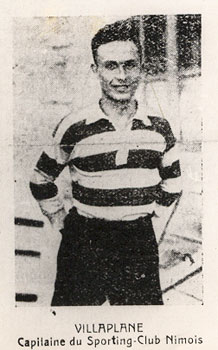
Alexandre Villaplane (1905–1944) was born in Algiers and between 1921 and 1935 played football (i.e., soccer) for various French club teams. Known for his vicious tackling and headers, Villaplane’s greatest achievement was on the pitch (i.e., field) playing for Les Bleus or, “The Blues.” The national team kit (i.e., uniform) was and remains red, white, and blue. Unfortunately, by 1944, Villaplane was wearing a different uniform and was better known for his cruelty, blackmail, and murders.
Click here to watch the video The Footballer Who Joined the Nazis.
The 1930 World Cup
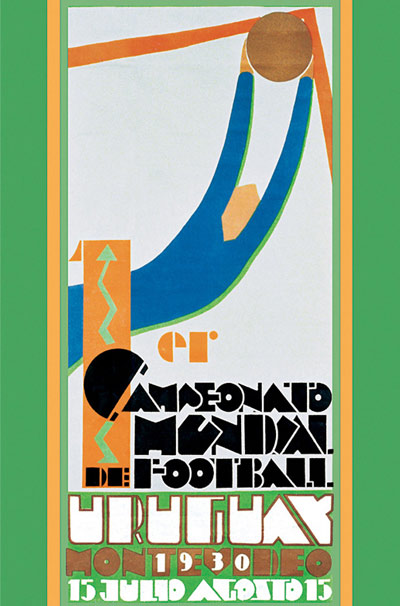
The first FIFA World Cup was played in Uruguay from 13 to 30 July 1930 and consisted of thirteen teams including France and the United States (yep, you read this correctly and here’s the other shocker—the United States national team came in third).
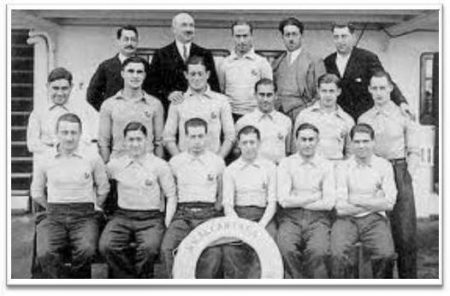
Villaplane was named captain of the French National World Cup team. France was one of four teams in Group 1 with Argentina, Chile, and Mexico rounding out the group. On 13 July 1930, Villaplane led the team to its only victory of the 1930 World Cup—a 4 to 1 score over Mexico. The next two games (against Argentina and Chile) were both 1 to 0 losses. Only Argentina broke out of the group stage and advanced to the knockout stage. Ultimately, Uruguay beat Argentina in the finals with a score of 4 to 2. The World Cup was ultimately seen as the highlight of Villaplane’s football career. After this, his club career went into a downward spiral.
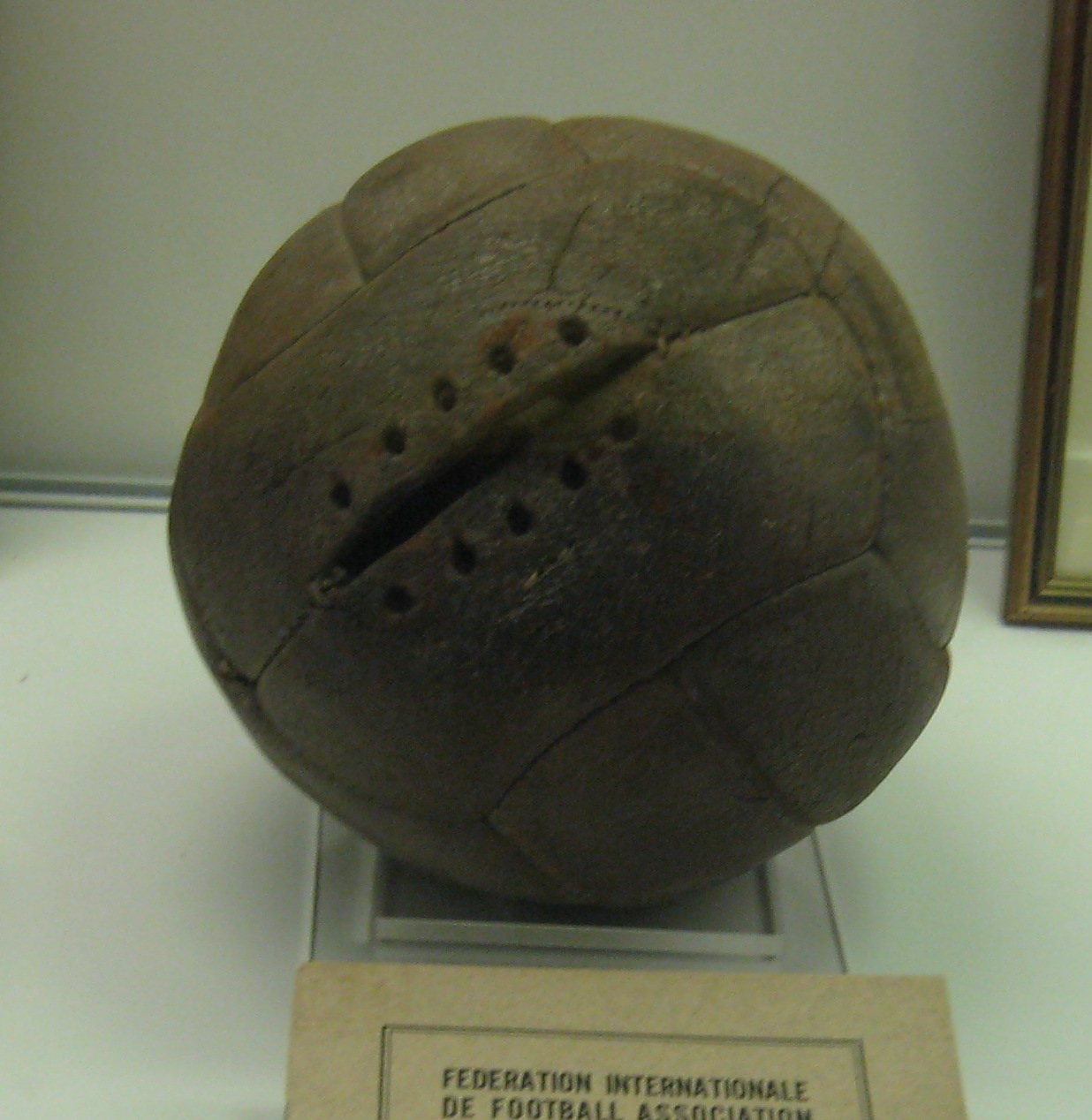
French Football Clubs
After the World Cup, Villaplane went on to resume playing for his club. While players were not supposed to be paid, in reality the clubs paid each of them a salary. Prior to the World Cup, Villaplane had a reputation as a mercenary, moving between teams for the highest payment. Soon after returning to France from Uruguay, a playboy lifestyle replaced Villaplane’s attitude and enthusiasm towards the game. His club career took a U-turn and soon Villaplane would be shuffled off from team to team after managers got tired of dealing with him.
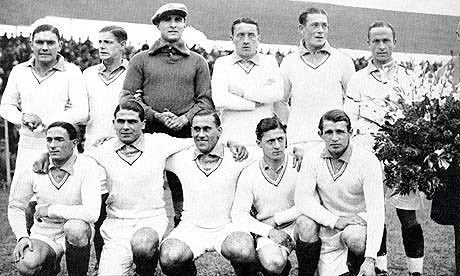
The Second World War
For six weeks beginning 10 May 1940 the Nazis army overran France. By 14 June 1940, their troops entered the “open” city of Paris and on 22 June, representatives of the Vichy government signed the official surrender documents. Five years earlier, Villaplane had been thrown in prison for racketeering and blackmail. However, with the new ruling class in town, Villaplane would not spend much more time in jail. The Nazis were looking for French thugs to assist in their efforts to control the occupied zone.
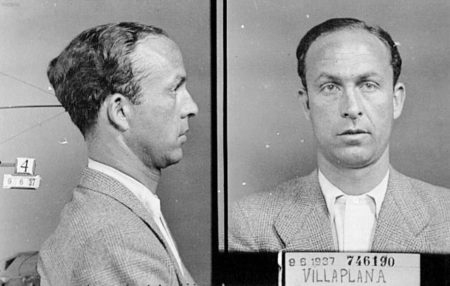
The French Gestapo
I hope you remember my blog post, The French Gestapo (click here to read the blog). If not, I suggest you visit the post as it goes into greater depth than I will devote here. Briefly, Henri Lafont was a career criminal who threw his hat into the Nazi cesspool. He formed the Bonny-Lafont Gang as a French extension of the Gestapo. He recruited and released hundreds of imprisoned hardened criminals to join his gang—including Alex Villaplane.
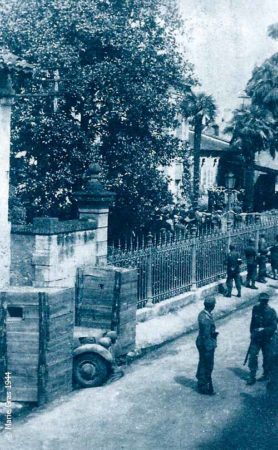
The Bonny-Lafont Gang was nothing more than a murderous bunch of thugs out to enrich themselves under the protection of the Gestapo. The Black Market provided much of their wealth and the Nazis were only too happy to have them provide the administration services albeit for a price. The other function the gang performed was to identify, interrogate, torture, and execute members of the French Resistance. Gang members were more feared by the French Resistance than the Gestapo because they were French, and it was easy for them to infiltrate resistance networks.
The gang operated out of 93, rue Lauriston which was nicknamed “The Street of Horrors” by the locals. Torture chambers were set up in the building and the screams of their victims could be heard throughout the night. In the basement was the execution chamber where posts stood to tie up the gang’s victims.
Brigade Nord African
Since Villaplane was Algerian by birth, Lafont put him in charge of an immigrant group called the Brigade Nord Africain (North African Brigade). The group’s mission was to counter increasing French resistance in the south of France. Villaplane was commissioned as a SS sub-lieutenant and wore the appropriate SS uniform. He quickly built a reputation for merciless cruelty. He personally oversaw massacres of prisoners, even shooting many of them himself. After the liberation, substantial evidence emerged confirming the group’s activities including rape, robbery, pillaging, and murder.
Villaplane would extort money (the normal amount was 400,000 francs) from his prisoners by promising them freedom in exchange for a price. After the money was paid, he executed them and stole their personal possessions. Villaplane did such a good job that Lafont eventually promoted him to drive one of the four white Bentleys as Lafont’s personal chauffeur.
The Épuration
The Épuration, or post-liberation purge, began immediately after the Germans left. Collaborationists were dealt with severely and in many cases, without trial. Retribution ranged from shaving heads (primarily for the women who were given the term horizontal collabos) to executions. Historians have estimated that up to 10,000 collabos—or suspected collabos—were executed during this time.
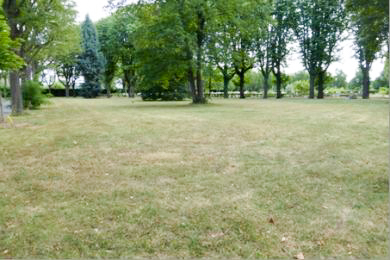
One of the first groups of collabos to be hunted down immediately after the Liberation were members of the Bonny-Lafont gang. They weren’t hard to find because they had flaunted their activities during the occupation and its members were well known to the Parisians and certainly, to the members of the resistance.
Along with Henri Lafont and his partner, Pierre Bonny, Villaplane was one of the first to be arrested. The leaders of the Bonny-Lafont gang and Villaplane were immediately put on trial, found guilty, and sentenced to death. Villaplane and his bosses were executed by firing squad on 26 December 1944.
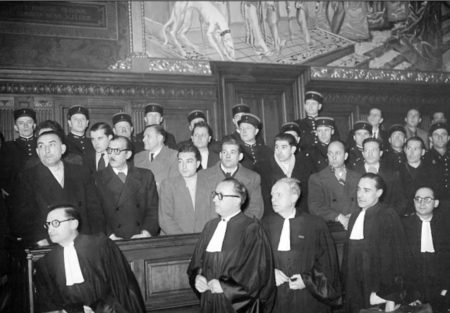
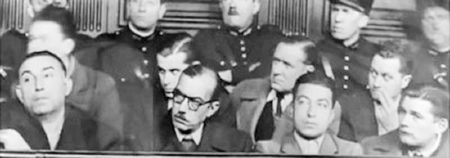
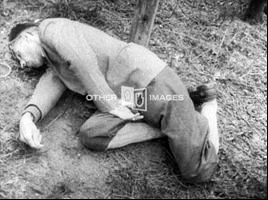
Watch arrest of the callabos.
Footballer or Monster?
So, was Alex Villaplane a good footballer who turned evil or was he fundamentally evil who just happened to have the talent to play good football? I’ll go with the latter.
I suppose the execution of Villaplane was the ultimate red card for him—no returning for the next game.
Correspondence and Commentary Policy
We welcome everyone to contact us either directly or through the individual blogs. Sandy and I review every piece of correspondence before it is approved to be published on the blog site. Our policy is to accept and publish comments that do not project hate, political, religious stances, or an attempt to solicit business (yeah, believe it or not, we do get that kind of stuff). Like many bloggers, we receive quite a bit of what is considered “Spam.” Those e-mails are immediately rejected without discussion.
Our blogs are written to inform our readers about history. We want to ensure discussions are kept within the boundary of historical facts and context without personal bias or prejudice.
We average about one e-mail every two days from our readers. We appreciate all communication because in many cases, it has led to friendships around the world.
Next Blog: James Bond’s Lover
★ Learn More About Alex Villaplane ★
Briand, Luc. Le brassard, Alexandre Villaplane, Capitaine Des Bleus et Officier Nazi. Paris: Plein Jour, 2022 (French).
Mishra, Samiran. Captain, Leader, Nazi Collaborator – Alexandre Villaplane, Football’s First French Villain. Football Paradise, March 2018. Click here to read the article.
Othen, Christopher. The King of Nazi Paris. Great Britain: Biteback Publishing, 2020.
YouTube – “The Guardian”
Forgotten Stories of Football. Click here to watch the video.
Disclaimer:
There may be a chance that after we publish this particular blog, the video links associated with the blog are no longer accessible. We have no control over this. Many times, whoever posts the video has done so without the consent of the video’s owner. In some cases, it is likely that the content is deemed unsuitable by YouTube. We apologize if you have tried to access the link and you don’t get the expected results. Same goes for internet links.
What’s New With Sandy and Stew?
We are excited to announce that you can now find us on Shepherd.com. This is a new platform that allows authors to share their new books, a little about themselves and a book shelf with their top five books on a favorite topic. This is a great way for readers to browse for a new book to read from a curated list based on their topic of interest.

I found a book entitled Les Murs de Fresnes written by Henri Calet (1904−1956). Calet was a famous French writer and journalist. After the liberation, Calet went into the infamous Fresnes Prison to record the graffiti left behind by the prisoners of the Nazis. This book—The Fresnes Walls—takes the reader into the cells where inscriptions have either been engraved into the walls or written with crayon or pencil.
Calet mentions the graffiti left behind by Sgt. Hilton Hilliard (the subject of our 31 March 2018 blog; Rendezvous with the Gestapo (click here to read the blog). Sgt. Hilliard was held for four months in cell 44 of the second division where he carved his message into the wall. Unfortunately, Calet’s book does not have a photo of the engraving.
It’s likely that Villaplane was held in Fresnes before his release by the Bonny-Lafont Gang.
Someone Is Commenting On Our Blogs
I’d like to thank Phil S. for reaching out to us concerning some questions about our blog, The Rumble of the Tumbrel (click here to read the blog). Phil wanted information on the exact locations of the guillotines used to execute Louis XVI and Marie Antoinette. He also was curious about the spot where the queen’s cart stopped on the route to her execution. (It was in front of the church, Saint Roch on rue Saint-Honorè.) Thanks Phil for a great discussion and we appreciate you becoming a subscriber to our bi-weekly blogs.
If there is a topic you’d like to see a blog written about, please don’t hesitate to contact me. I love hearing from you so keep those comments coming.
Why Would You Want To Buy Our “Walks Through History” Books?
Simple.
You like to travel and experience history and historical events. You like to see original buildings that had a significant impact on the people and events of the history you’re engaged with. You want to know the stories behind the brick and mortar in front of you.
The walking tour books are meticulously researched so you can go directly to those sites and learn about the building’s history as well as an introduction to some of the more interesting people associated with it.
Thank You
Sandy and I appreciate you visiting with us. We have some exciting things on the horizon and we’ll keep you updated as we go along.
Share This:
Follow Stew:
Find Stew’s books on Amazon and iBooks.
Please note that we do not and will not take compensation from individuals or companies mentioned or promoted in the blogs.
Walks Through History
Copyright © 2022 Stew Ross


Always enjoy your blogs (and this one was particularly interesting) and looking forward to the upcoming World Cup!
A quick note about your headline:
it should read as L’execution, as you can’t have a Le followed by another word that also starts with an e!
Oh, those darn French linguists……….
Hi Kim, Always good to hear from you especially after you edit our blogs. Ha ha. Seriously, thank you for pointing out our errors, especially the ones in French. We’ve struggled over the years with the inconsistencies of their language. It is probably easy to see that going from book-to-book. Jean is our proof reader for “All things in French” but we only use her services for the books and not the blogs. Even Jean, a former French teacher, admits there are inconsistencies. Anyway, thanks for your kind comment about the blog. I’m writing this while waiting for the USA/Wales first game of the group. STEW